The Best 10 Alternatives to Snyk (+ Pricing & Reviews)
Twingate Team
•
Jul 27, 2024

Snyk is a developer security platform that helps find and fix vulnerabilities in code, open source dependencies, containers, and infrastructure as code. While Snyk offers robust security solutions, it may not be the right fit for every organization. This article explores how Twingate provides secure access to private resources for distributed workforces.
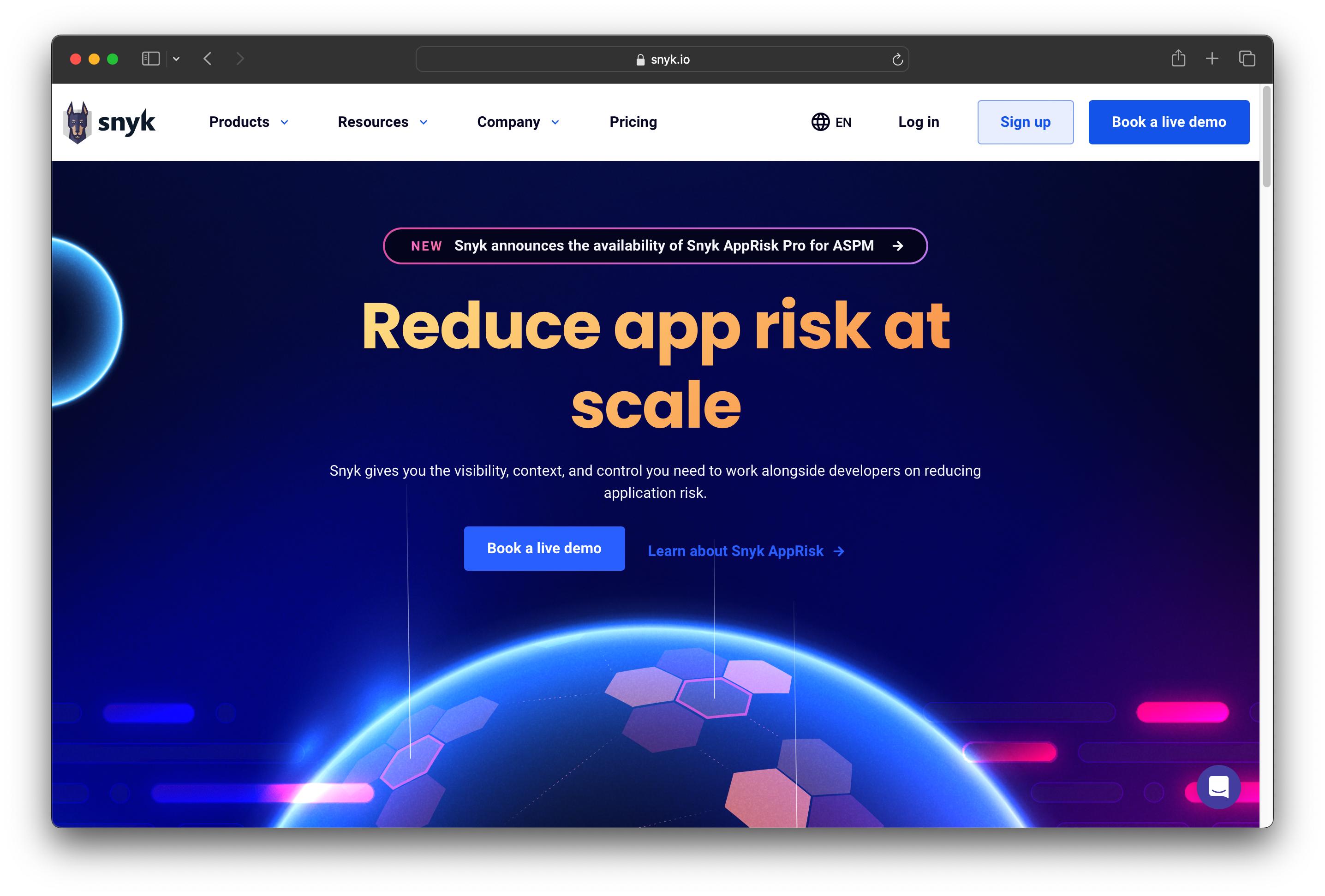
10 Alternatives to Snyk
1. Tenable

Tenable is a cybersecurity solution that focuses on exposure management, offering tools to identify and mitigate risks across various environments, including IT infrastructure, cloud, and critical systems. With features like AI-powered analysis and comprehensive vulnerability management, Tenable aims to provide robust security for organizations of all sizes.
Tenable Pricing
Tenable Nessus Professional: 1 year - $3,990
Tenable Nessus Professional: 2 years - $7,780.50
Tenable Nessus Professional: 3 years - $11,371.50
Advanced support: $400
Nessus Fundamentals training: $275
Tenable Reviews
Tenable has an overall rating of 4.5 out of 5 stars based on 109 reviews. Users praise its intuitive interface and comprehensive asset discovery. Check out more of our reviews here!
Pros and Cons of Tenable
Pros:
Automated scanning simplifies the process of identifying vulnerabilities, saving time and reducing manual effort.
Comprehensive vulnerability identification ensures that potential threats are detected early, enhancing overall security posture.
Efficient scanning capabilities allow for quick assessments, minimizing downtime and maintaining productivity.
Cons:
Dashboard issues can make it challenging to navigate and interpret data, potentially hindering quick decision-making.
Steep learning curve for new users may require additional training and resources, impacting initial deployment.
Inadequate reporting features might limit the ability to generate detailed insights, affecting strategic planning.
2. ESET PROTECT Complete
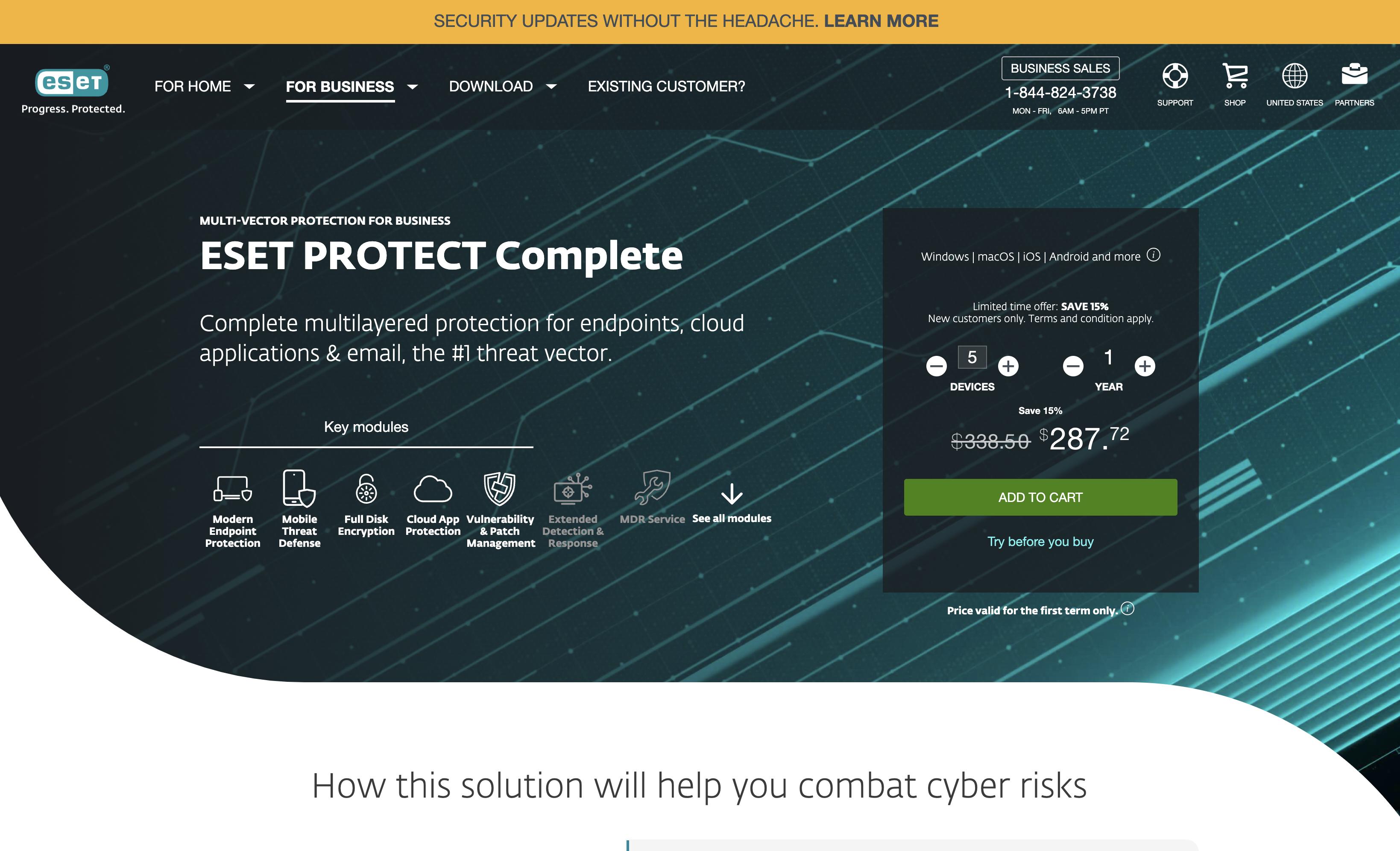
ESET PROTECT Complete is a cybersecurity solution designed to offer multi-layered protection for endpoints, cloud applications, and email. It aims to safeguard businesses from various cyber threats with features like advanced threat defense, data encryption, and vulnerability management, ensuring comprehensive security for modern enterprises.
ESET PROTECT Complete Pricing
Original price: $338.50
Discounted price: $287.72 (15% off)
ESET PROTECT Complete Reviews
ESET PROTECT Complete has an overall rating of 4.7 out of 5 stars based on 150 reviews. Users praise its comprehensive protection and user-friendly interface. Check out more of our reviews here!
Pros and Cons ofESET PROTECT Complete
Pros:
Advanced Threat Defense: ESET PROTECT Complete offers robust protection against sophisticated cyber threats, ensuring your business remains secure.
Multi-Layered Security: Provides comprehensive protection for endpoints, cloud applications, and email, covering all primary threat vectors.
Ease of Use: Features intuitive setup and deployment, with single-click management and detailed reporting capabilities.
Cons:
Price Variability: Promotional pricing is only valid for the first term, which can complicate long-term budgeting.
Additional Costs: Advanced features like Extended Detection & Response and Multi-Factor Authentication are add-ons, increasing overall expenses.
Complexity for Small Businesses: The extensive range of modules may be overwhelming for small businesses with limited IT resources.
3. Pentera

Pentera is a cybersecurity platform that offers Automated Security Validation to continuously test and improve your defenses against the latest threats. It identifies and prioritizes security gaps, guiding remediation efforts to reduce cyber exposure. Pentera aims to provide comprehensive and actionable insights for businesses of all sizes.
Pentera Pricing
Pentera's pricing is not public. Contact their support for more info.
Pentera Reviews
Pentera has an overall rating of 4.5 out of 5 stars based on 130 reviews. Users appreciate its ease of use and detailed remediation guidance. Check out more of our reviews here!
Pros and Cons of Pentera
Pros:
Automated Security Validation: Continuously tests and validates security defenses, reducing exposure to threats.
Trusted by Leading Companies: Endorsed by well-known organizations, showcasing its reliability and effectiveness.
High ROI: Significant return on investment, making it a cost-effective solution for comprehensive security validation.
Cons:
Complexity: The platform may be complex and require a learning curve for new users.
Cost: Potentially high cost, especially for smaller organizations with limited budgets.
Dependence on Automation: Over-reliance on automated tools might miss nuanced threats needing human intervention.
4. Lacework
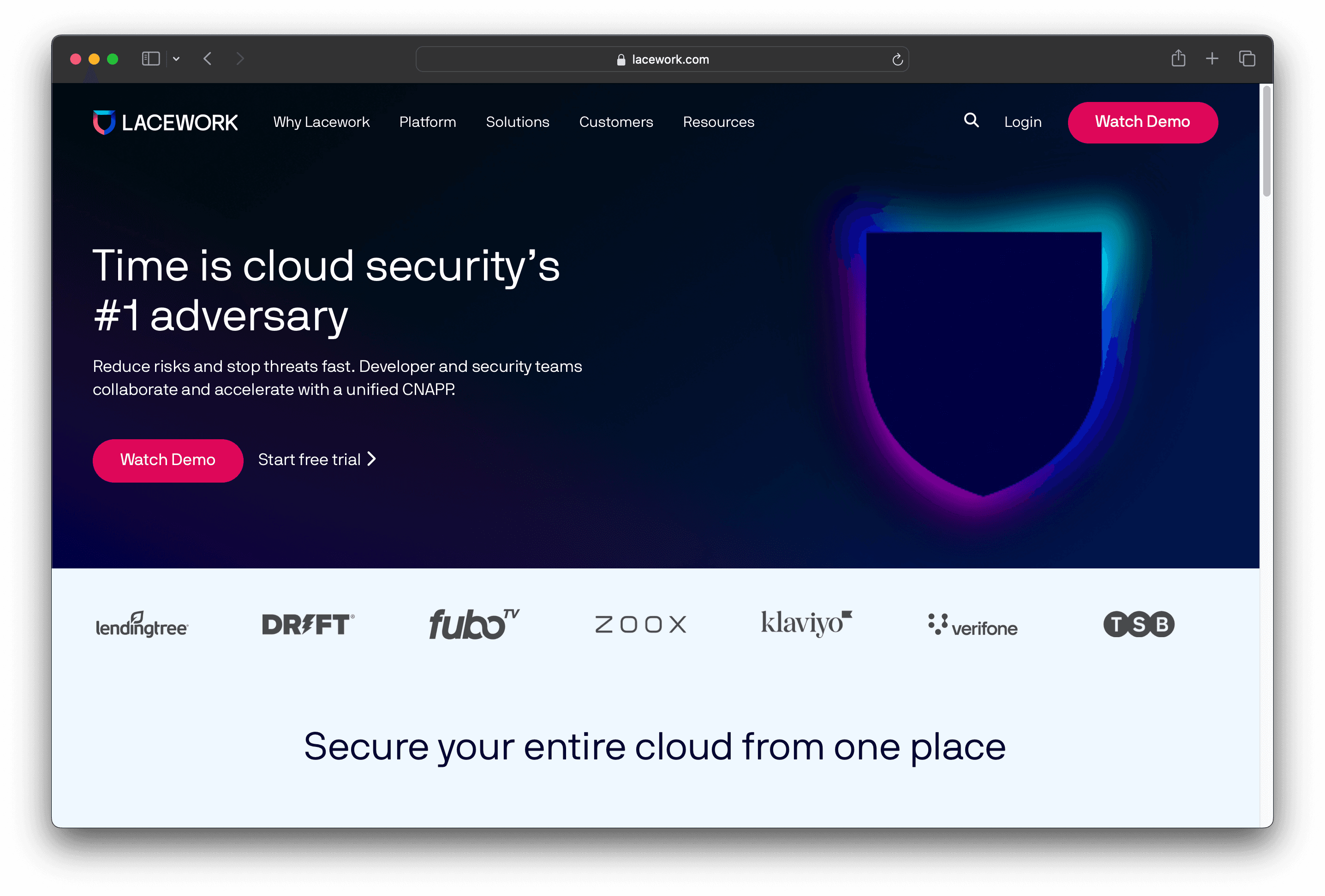
Lacework is a security platform designed for DevOps, containers, and cloud environments. It offers multi-cloud visibility and protection through an AI-driven approach, aiming to simplify security management and compliance. Lacework helps businesses of all sizes secure their cloud infrastructure efficiently and effectively.
Lacework Pricing
Pro
Enterprise
Lacework's pricing is not public. Contact their support for more info.
Lacework Reviews
Lacework has an overall rating of 4.4 out of 5 stars based on 377 reviews. Users appreciate the detailed information and visibility the tool provides about their infrastructure. Check out more of our reviews here!
Pros and Cons of Lacework
Pros:
Unified Security Platform: Lacework offers comprehensive security from code to cloud, ensuring all aspects of your infrastructure are protected.
AI-Driven Insights: Provides unmatched multi-cloud visibility and protection, leveraging AI to detect and respond to threats effectively.
Developer Empowerment: Equips developers with tools to identify and fix risks before they reach production, enhancing overall security posture.
Cons:
Complexity: The platform can be complex to set up and manage, especially for smaller teams without dedicated security expertise.
High Cost: Lacework's comprehensive features come at a potentially high cost, which may be prohibitive for startups or small businesses.
Learning Curve: There is a significant learning curve associated with fully utilizing all features and integrations, requiring time and resources.
5. Illumio
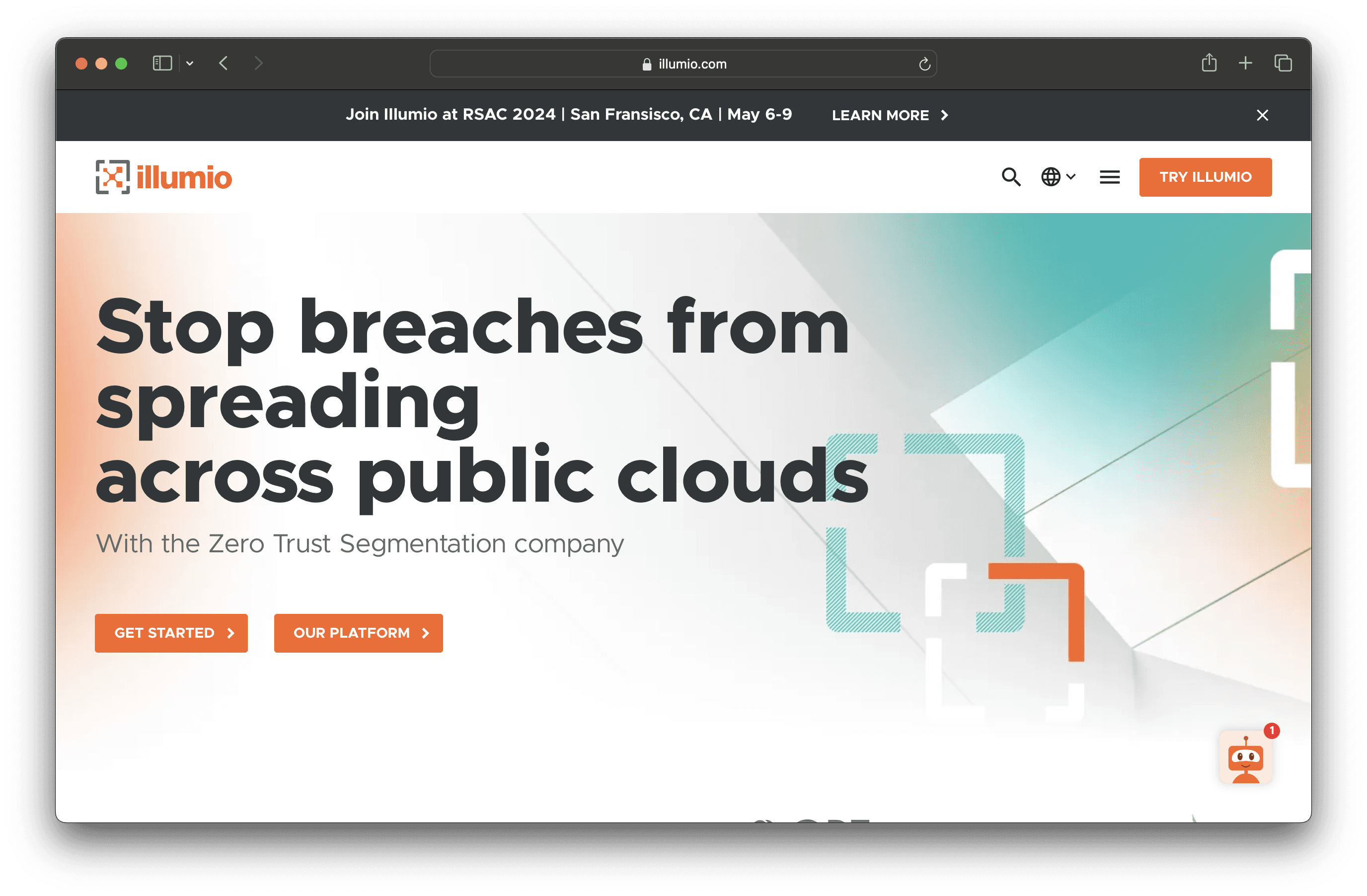
Illumio is a security platform specializing in Zero Trust Segmentation. It visualizes communication between workloads and devices, sets granular policies, and isolates high-value assets to prevent breaches and ransomware spread. Designed for simplicity and quick deployment, Illumio aims to enhance security for businesses of all sizes.
Illumio Pricing
Illumio's pricing is not public. Contact their support for more info.
Illumio Reviews
Illumio has an overall rating of 4.5 out of 5 stars based on 12 reviews. Users appreciate the database security and protection from malware threats. Check out more of our reviews here!
Pros and Cons of Illumio
Pros:
Recognized Leader: Illumio is acknowledged as a leader in the Forrester Wave™ for Microsegmentation Solutions, showcasing its industry credibility.
Comprehensive Visibility: Provides detailed insights into communication between workloads and devices, enabling quick, decisive actions to enhance security.
Customer Satisfaction: High customer satisfaction with 89% recommendation based on 91 validated reviews, indicating strong user approval.
Cons:
Expensive: The cost of Illumio's solutions can be prohibitive, especially for smaller organizations with limited budgets.
Integration Issues: Users have reported challenges integrating Illumio with existing systems, which can complicate deployment.
Learning Curve: The platform may require significant time and resources to master, posing a challenge for teams without dedicated security expertise.
6. Proofpoint
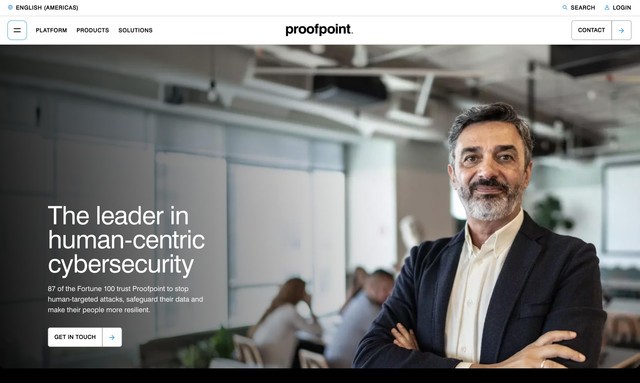
Proofpoint is a cybersecurity solution focused on protecting people and data from targeted attacks. It offers comprehensive threat defense, data loss prevention, and security awareness training. Designed for ease of use and scalability, Proofpoint aims to enhance security for businesses of all sizes.
Proofpoint Pricing
Proofpoint's pricing is not public. Contact their support for more info.
Proofpoint Reviews
Proofpoint has an overall rating of 4.6 out of 5 stars based on 498 reviews. Users appreciate its high detection rates and ease of use. Check out more of our reviews here!
Pros and Cons of Proofpoint
Pros:
High Detection Rates: Proofpoint excels in identifying and blocking malicious emails, ensuring robust protection against phishing and other email-based threats.
Comprehensive Threat Defense: Offers a wide range of security features, including data loss prevention and encryption, to safeguard sensitive information.
Ease of Use: Users appreciate the intuitive interface, making it easier to manage and deploy security measures without extensive training.
Cons:
Complexity: The extensive range of features can be overwhelming for smaller organizations or those new to cybersecurity.
High Cost: Proofpoint's comprehensive solutions come at a premium price, which may be prohibitive for small to medium-sized businesses.
False Positives: Users have reported instances of legitimate emails being flagged as threats, which can disrupt communication and workflow.
7. OPSWAT Security Score
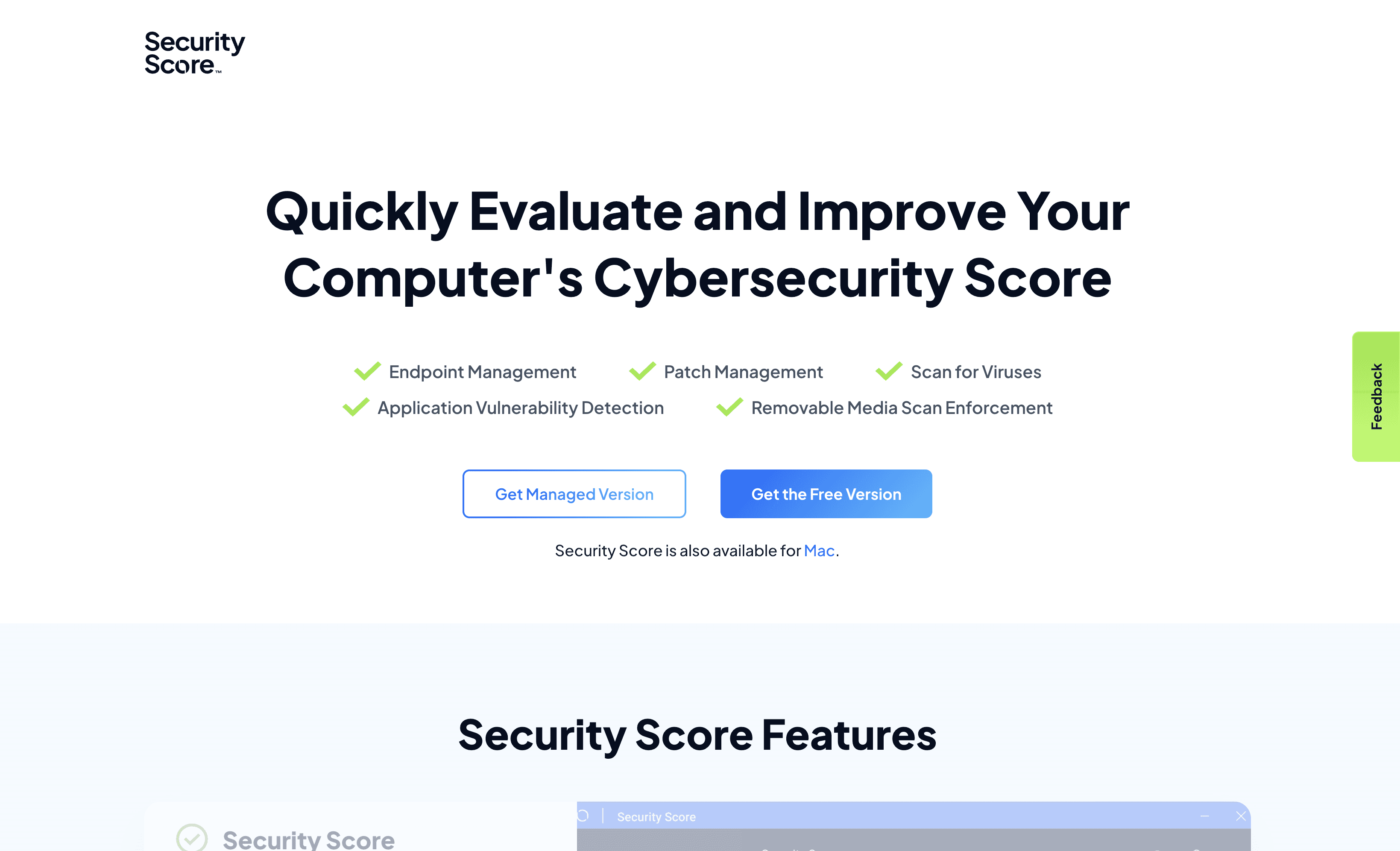
OPSWAT Security Score is a tool designed to evaluate and improve your computer's cybersecurity. It offers features like endpoint management, patch management, virus scanning, and application vulnerability detection. With both free and managed versions available, it aims to enhance security for users of all technical levels.
OPSWAT Security Score Pricing
Managed Version
Free Version
OPSWAT Security Score's pricing is not public. Contact their support for more info.
OPSWAT Security Score Reviews
OPSWAT Security Score has an overall rating of 4.3 out of 5 stars based on 15 reviews. Users appreciate its comprehensive endpoint management. Check out more of our reviews here!
Pros and Cons of OPSWAT Security Score
Pros:
Comprehensive Risk Assessment: Evaluates cyber-risk based on OS updates, vulnerable applications, firewall, and malware protection.
Ease of Use: Download and run without installation, making it accessible for all users.
Free to Use: Users can check their security score and fix issues without any cost.
Cons:
Limited Features for Unclaimed Profiles: The profile has limited features unless claimed and upgraded by the provider.
Lack of Security Information: The seller has not added their security information, which might be a concern for some users.
Insufficient Reviews: There are not enough reviews to provide comprehensive buying insights on G2.
8. Rubrik
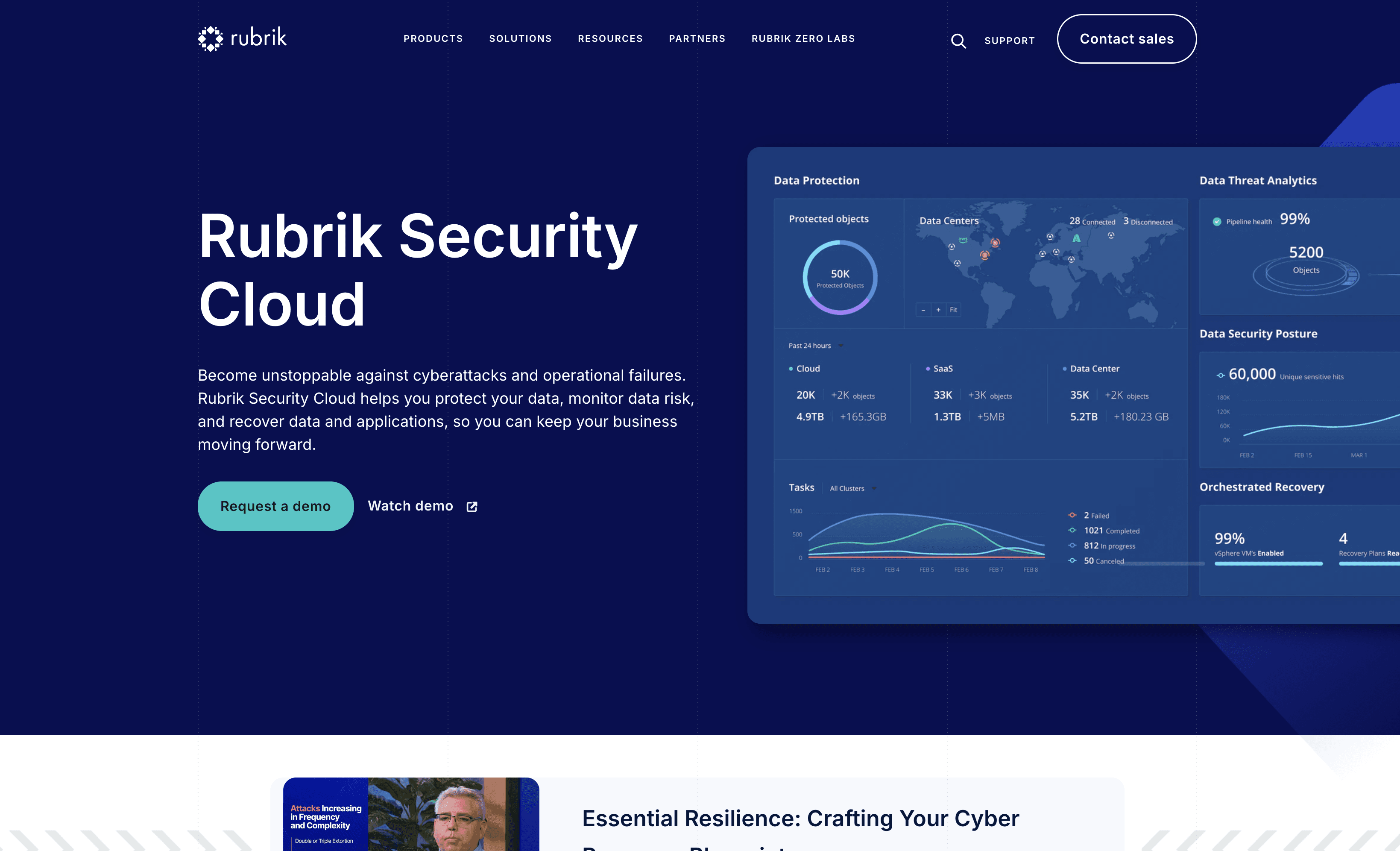
Rubrik is a data security solution designed to protect, monitor, and recover data across enterprise, cloud, and SaaS environments. Built on Zero Trust principles, it aims to ensure business continuity by safeguarding data against cyberattacks and operational failures, making it a resilient choice for organizations of all sizes.
Rubrik Pricing
Rubrik's pricing is not public. Contact their support for more info.
Rubrik Reviews
Rubrik has an overall rating of 4.6 out of 5 stars based on 91 reviews. Users appreciate its ease of use and fast setup. Check out more of our reviews here!
Pros and Cons of Rubrik
Pros:
Ease of Use: Users frequently praise Rubrik for its intuitive interface, making it accessible even for those less familiar with data security software.
Reliable Backup Solutions: Rubrik's robust backup capabilities ensure data is securely stored and easily recoverable, providing peace of mind for businesses.
Zero Trust Principles: Built on Zero Trust architecture, Rubrik offers advanced protection against cyber threats, safeguarding critical data assets.
Cons:
Expensive: The comprehensive features and capabilities of Rubrik come at a high cost, which may be prohibitive for smaller organizations.
Complexity: The platform's extensive functionalities can be overwhelming, requiring significant effort to implement and manage effectively.
Learning Curve: Users may need substantial training to fully utilize Rubrik's advanced features, impacting initial deployment and efficiency.
9. Orca Security
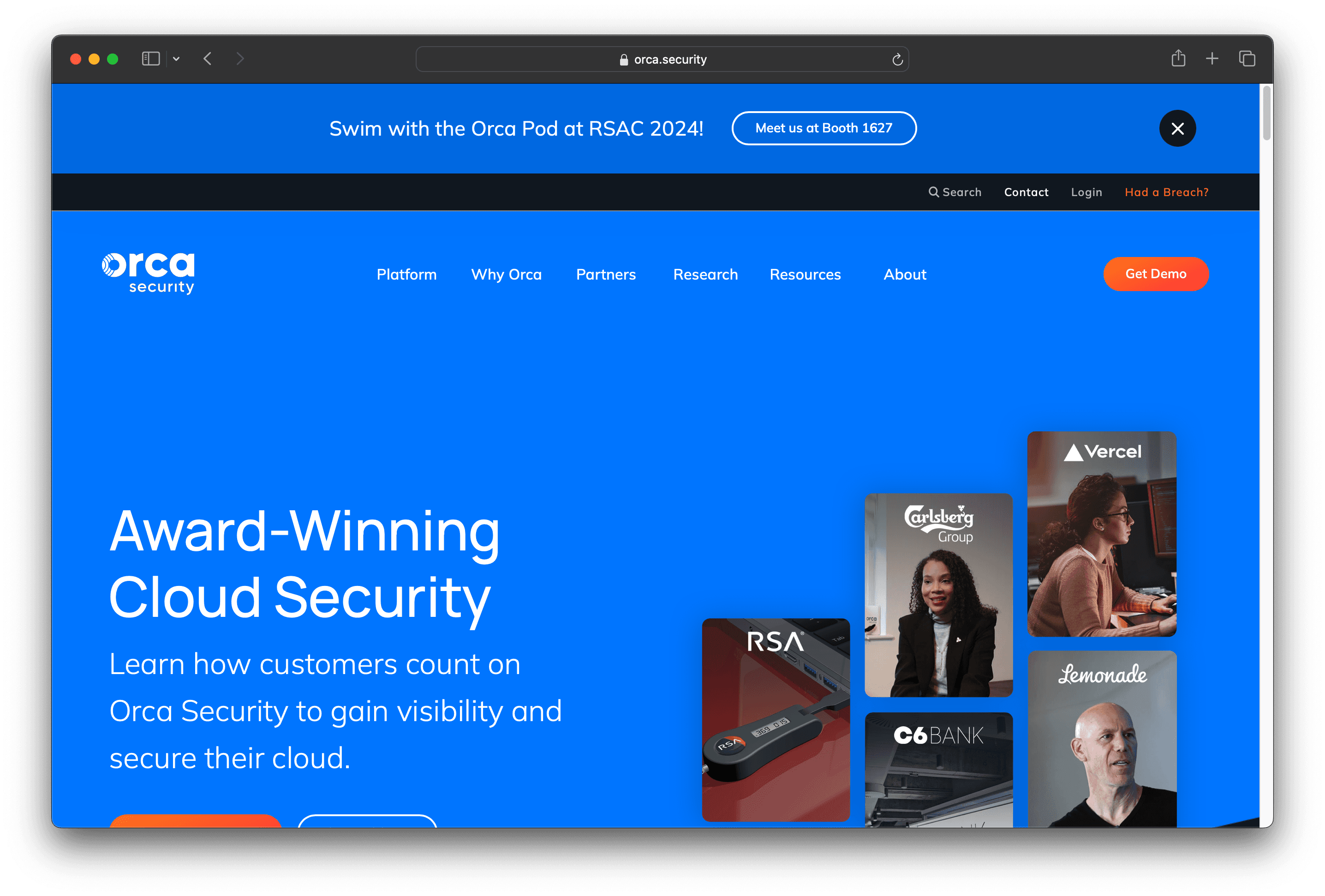
Orca Security is a cloud security platform designed to provide comprehensive protection for cloud-native applications. It offers features like vulnerability management, compliance, and API security, all through an agentless deployment. Orca Security aims to simplify cloud security management for businesses of all sizes.
Orca Security Pricing
Orca Security's pricing is not public. Contact their support for more info.
Orca Security Reviews
Orca Security has an overall rating of 4.6 out of 5 stars based on 167 reviews. Users appreciate its deep insights and affordability. Check out more of our reviews here!
Pros and Cons of Orca Security
Pros:
Agentless Cloud Security: Orca's patented SideScanning technology eliminates the need for agents, reducing gaps in coverage and operational costs.
Easy Onboarding: Quick and efficient onboarding process that automatically detects and monitors new cloud assets.
Comprehensive Coverage: Full-stack visibility and coverage for all cloud assets, including VMs, containers, storage buckets, databases, and serverless applications.
Cons:
Complexity for Small Businesses: The comprehensive and advanced features might be overwhelming for smaller organizations with limited IT resources.
Cost: High operational efficiency and advanced capabilities might come at a premium price, which could be a barrier for budget-conscious organizations.
Learning Curve: The extensive range of features and capabilities might require a significant learning curve for new users to fully utilize the platform.
10. CrowdStrike Falcon
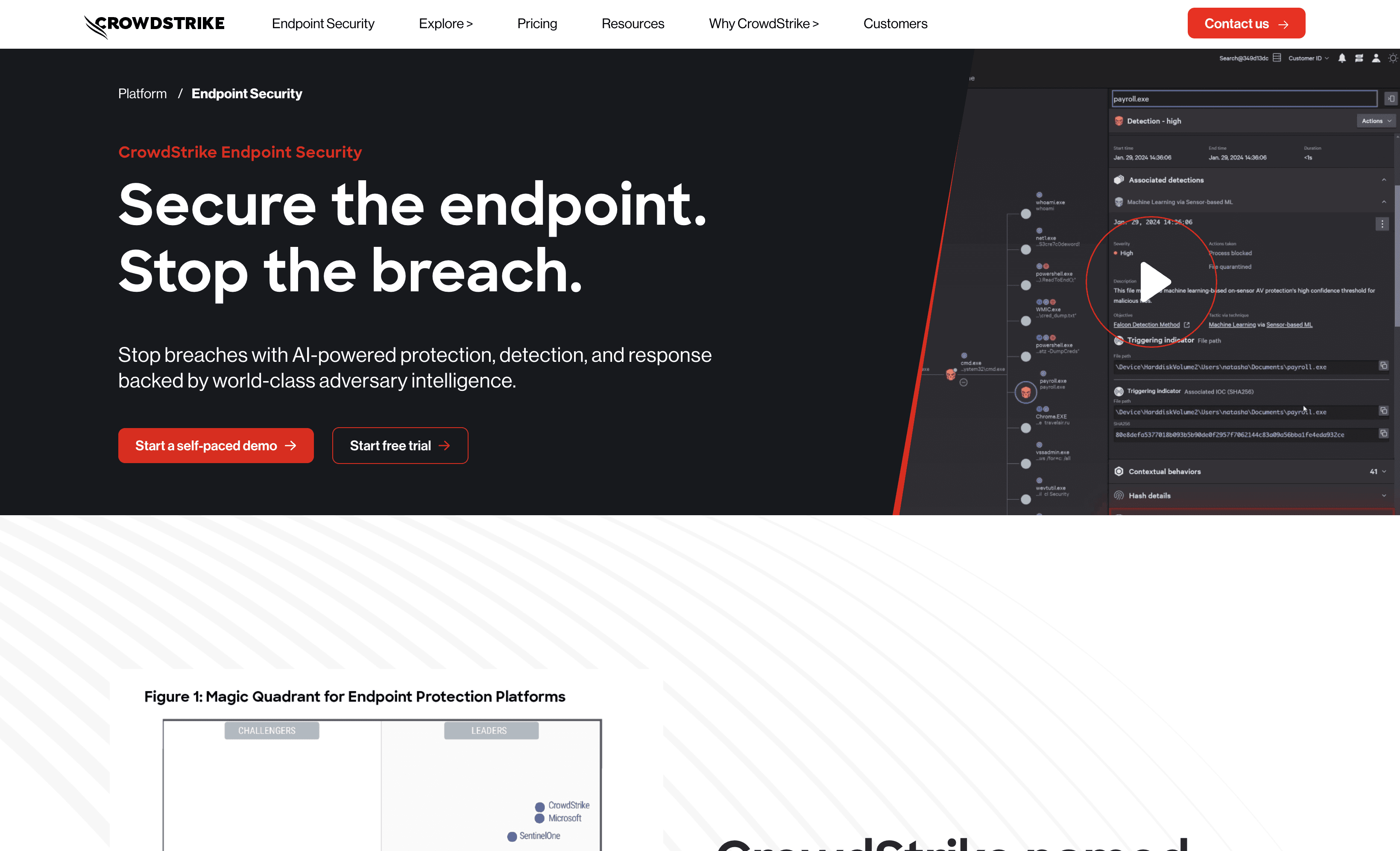
CrowdStrike Falcon is an endpoint security solution designed to stop breaches with AI-powered protection, detection, and response. It offers seamless deployment and comprehensive coverage for cloud-native applications, making it an effective choice for businesses of all sizes.
CrowdStrike Falcon Pricing
Falcon Pro: $99.99/device per year
Falcon Enterprise: $184.99/device per year
Falcon Elite: Contact sales for pricing
Falcon Go: $59.99/device per year
Falcon Complete MDR: Contact sales for pricing
CrowdStrike Falcon Reviews
CrowdStrike Falcon has an overall rating of 4.7 out of 5 stars based on 278 reviews. Users appreciate its advanced threat intelligence and strong architecture. Check out more of our reviews here!
Pros and Cons of CrowdStrike Falcon
Pros:
AI-Powered Protection: Utilizes advanced AI and machine learning to detect and block threats early, enhancing overall security.
Comprehensive Coverage: Protects all major operating systems, including Windows, macOS, Linux, and ChromeOS, ensuring broad security.
Unified Visibility: Offers unified visibility across cloud, endpoints, and identities, enabling detection of cross-domain attacks.
Cons:
Cost: Enterprise-level security solutions like CrowdStrike Falcon can be expensive, potentially limiting accessibility for smaller organizations.
Complexity: The platform may require a certain level of expertise to fully utilize all its features and capabilities, posing a challenge for some users.
Resource Intensive: Advanced features and comprehensive coverage might require significant system resources, which could be a concern for smaller IT infrastructures.
Looking to secure your technical infrastructure?
Twingate offers granular access controls and deployment automations to protect your VPC environment. By leveraging Zero Trust security tools, Twingate ensures that private resources and internet traffic remain secure in the modern world of work. Try Twingate for Free today!
Rapidly implement a modern Zero Trust network that is more secure and maintainable than VPNs.
The Best 10 Alternatives to Snyk (+ Pricing & Reviews)
Twingate Team
•
Jul 27, 2024

Snyk is a developer security platform that helps find and fix vulnerabilities in code, open source dependencies, containers, and infrastructure as code. While Snyk offers robust security solutions, it may not be the right fit for every organization. This article explores how Twingate provides secure access to private resources for distributed workforces.

10 Alternatives to Snyk
1. Tenable

Tenable is a cybersecurity solution that focuses on exposure management, offering tools to identify and mitigate risks across various environments, including IT infrastructure, cloud, and critical systems. With features like AI-powered analysis and comprehensive vulnerability management, Tenable aims to provide robust security for organizations of all sizes.
Tenable Pricing
Tenable Nessus Professional: 1 year - $3,990
Tenable Nessus Professional: 2 years - $7,780.50
Tenable Nessus Professional: 3 years - $11,371.50
Advanced support: $400
Nessus Fundamentals training: $275
Tenable Reviews
Tenable has an overall rating of 4.5 out of 5 stars based on 109 reviews. Users praise its intuitive interface and comprehensive asset discovery. Check out more of our reviews here!
Pros and Cons of Tenable
Pros:
Automated scanning simplifies the process of identifying vulnerabilities, saving time and reducing manual effort.
Comprehensive vulnerability identification ensures that potential threats are detected early, enhancing overall security posture.
Efficient scanning capabilities allow for quick assessments, minimizing downtime and maintaining productivity.
Cons:
Dashboard issues can make it challenging to navigate and interpret data, potentially hindering quick decision-making.
Steep learning curve for new users may require additional training and resources, impacting initial deployment.
Inadequate reporting features might limit the ability to generate detailed insights, affecting strategic planning.
2. ESET PROTECT Complete

ESET PROTECT Complete is a cybersecurity solution designed to offer multi-layered protection for endpoints, cloud applications, and email. It aims to safeguard businesses from various cyber threats with features like advanced threat defense, data encryption, and vulnerability management, ensuring comprehensive security for modern enterprises.
ESET PROTECT Complete Pricing
Original price: $338.50
Discounted price: $287.72 (15% off)
ESET PROTECT Complete Reviews
ESET PROTECT Complete has an overall rating of 4.7 out of 5 stars based on 150 reviews. Users praise its comprehensive protection and user-friendly interface. Check out more of our reviews here!
Pros and Cons ofESET PROTECT Complete
Pros:
Advanced Threat Defense: ESET PROTECT Complete offers robust protection against sophisticated cyber threats, ensuring your business remains secure.
Multi-Layered Security: Provides comprehensive protection for endpoints, cloud applications, and email, covering all primary threat vectors.
Ease of Use: Features intuitive setup and deployment, with single-click management and detailed reporting capabilities.
Cons:
Price Variability: Promotional pricing is only valid for the first term, which can complicate long-term budgeting.
Additional Costs: Advanced features like Extended Detection & Response and Multi-Factor Authentication are add-ons, increasing overall expenses.
Complexity for Small Businesses: The extensive range of modules may be overwhelming for small businesses with limited IT resources.
3. Pentera

Pentera is a cybersecurity platform that offers Automated Security Validation to continuously test and improve your defenses against the latest threats. It identifies and prioritizes security gaps, guiding remediation efforts to reduce cyber exposure. Pentera aims to provide comprehensive and actionable insights for businesses of all sizes.
Pentera Pricing
Pentera's pricing is not public. Contact their support for more info.
Pentera Reviews
Pentera has an overall rating of 4.5 out of 5 stars based on 130 reviews. Users appreciate its ease of use and detailed remediation guidance. Check out more of our reviews here!
Pros and Cons of Pentera
Pros:
Automated Security Validation: Continuously tests and validates security defenses, reducing exposure to threats.
Trusted by Leading Companies: Endorsed by well-known organizations, showcasing its reliability and effectiveness.
High ROI: Significant return on investment, making it a cost-effective solution for comprehensive security validation.
Cons:
Complexity: The platform may be complex and require a learning curve for new users.
Cost: Potentially high cost, especially for smaller organizations with limited budgets.
Dependence on Automation: Over-reliance on automated tools might miss nuanced threats needing human intervention.
4. Lacework

Lacework is a security platform designed for DevOps, containers, and cloud environments. It offers multi-cloud visibility and protection through an AI-driven approach, aiming to simplify security management and compliance. Lacework helps businesses of all sizes secure their cloud infrastructure efficiently and effectively.
Lacework Pricing
Pro
Enterprise
Lacework's pricing is not public. Contact their support for more info.
Lacework Reviews
Lacework has an overall rating of 4.4 out of 5 stars based on 377 reviews. Users appreciate the detailed information and visibility the tool provides about their infrastructure. Check out more of our reviews here!
Pros and Cons of Lacework
Pros:
Unified Security Platform: Lacework offers comprehensive security from code to cloud, ensuring all aspects of your infrastructure are protected.
AI-Driven Insights: Provides unmatched multi-cloud visibility and protection, leveraging AI to detect and respond to threats effectively.
Developer Empowerment: Equips developers with tools to identify and fix risks before they reach production, enhancing overall security posture.
Cons:
Complexity: The platform can be complex to set up and manage, especially for smaller teams without dedicated security expertise.
High Cost: Lacework's comprehensive features come at a potentially high cost, which may be prohibitive for startups or small businesses.
Learning Curve: There is a significant learning curve associated with fully utilizing all features and integrations, requiring time and resources.
5. Illumio

Illumio is a security platform specializing in Zero Trust Segmentation. It visualizes communication between workloads and devices, sets granular policies, and isolates high-value assets to prevent breaches and ransomware spread. Designed for simplicity and quick deployment, Illumio aims to enhance security for businesses of all sizes.
Illumio Pricing
Illumio's pricing is not public. Contact their support for more info.
Illumio Reviews
Illumio has an overall rating of 4.5 out of 5 stars based on 12 reviews. Users appreciate the database security and protection from malware threats. Check out more of our reviews here!
Pros and Cons of Illumio
Pros:
Recognized Leader: Illumio is acknowledged as a leader in the Forrester Wave™ for Microsegmentation Solutions, showcasing its industry credibility.
Comprehensive Visibility: Provides detailed insights into communication between workloads and devices, enabling quick, decisive actions to enhance security.
Customer Satisfaction: High customer satisfaction with 89% recommendation based on 91 validated reviews, indicating strong user approval.
Cons:
Expensive: The cost of Illumio's solutions can be prohibitive, especially for smaller organizations with limited budgets.
Integration Issues: Users have reported challenges integrating Illumio with existing systems, which can complicate deployment.
Learning Curve: The platform may require significant time and resources to master, posing a challenge for teams without dedicated security expertise.
6. Proofpoint

Proofpoint is a cybersecurity solution focused on protecting people and data from targeted attacks. It offers comprehensive threat defense, data loss prevention, and security awareness training. Designed for ease of use and scalability, Proofpoint aims to enhance security for businesses of all sizes.
Proofpoint Pricing
Proofpoint's pricing is not public. Contact their support for more info.
Proofpoint Reviews
Proofpoint has an overall rating of 4.6 out of 5 stars based on 498 reviews. Users appreciate its high detection rates and ease of use. Check out more of our reviews here!
Pros and Cons of Proofpoint
Pros:
High Detection Rates: Proofpoint excels in identifying and blocking malicious emails, ensuring robust protection against phishing and other email-based threats.
Comprehensive Threat Defense: Offers a wide range of security features, including data loss prevention and encryption, to safeguard sensitive information.
Ease of Use: Users appreciate the intuitive interface, making it easier to manage and deploy security measures without extensive training.
Cons:
Complexity: The extensive range of features can be overwhelming for smaller organizations or those new to cybersecurity.
High Cost: Proofpoint's comprehensive solutions come at a premium price, which may be prohibitive for small to medium-sized businesses.
False Positives: Users have reported instances of legitimate emails being flagged as threats, which can disrupt communication and workflow.
7. OPSWAT Security Score

OPSWAT Security Score is a tool designed to evaluate and improve your computer's cybersecurity. It offers features like endpoint management, patch management, virus scanning, and application vulnerability detection. With both free and managed versions available, it aims to enhance security for users of all technical levels.
OPSWAT Security Score Pricing
Managed Version
Free Version
OPSWAT Security Score's pricing is not public. Contact their support for more info.
OPSWAT Security Score Reviews
OPSWAT Security Score has an overall rating of 4.3 out of 5 stars based on 15 reviews. Users appreciate its comprehensive endpoint management. Check out more of our reviews here!
Pros and Cons of OPSWAT Security Score
Pros:
Comprehensive Risk Assessment: Evaluates cyber-risk based on OS updates, vulnerable applications, firewall, and malware protection.
Ease of Use: Download and run without installation, making it accessible for all users.
Free to Use: Users can check their security score and fix issues without any cost.
Cons:
Limited Features for Unclaimed Profiles: The profile has limited features unless claimed and upgraded by the provider.
Lack of Security Information: The seller has not added their security information, which might be a concern for some users.
Insufficient Reviews: There are not enough reviews to provide comprehensive buying insights on G2.
8. Rubrik

Rubrik is a data security solution designed to protect, monitor, and recover data across enterprise, cloud, and SaaS environments. Built on Zero Trust principles, it aims to ensure business continuity by safeguarding data against cyberattacks and operational failures, making it a resilient choice for organizations of all sizes.
Rubrik Pricing
Rubrik's pricing is not public. Contact their support for more info.
Rubrik Reviews
Rubrik has an overall rating of 4.6 out of 5 stars based on 91 reviews. Users appreciate its ease of use and fast setup. Check out more of our reviews here!
Pros and Cons of Rubrik
Pros:
Ease of Use: Users frequently praise Rubrik for its intuitive interface, making it accessible even for those less familiar with data security software.
Reliable Backup Solutions: Rubrik's robust backup capabilities ensure data is securely stored and easily recoverable, providing peace of mind for businesses.
Zero Trust Principles: Built on Zero Trust architecture, Rubrik offers advanced protection against cyber threats, safeguarding critical data assets.
Cons:
Expensive: The comprehensive features and capabilities of Rubrik come at a high cost, which may be prohibitive for smaller organizations.
Complexity: The platform's extensive functionalities can be overwhelming, requiring significant effort to implement and manage effectively.
Learning Curve: Users may need substantial training to fully utilize Rubrik's advanced features, impacting initial deployment and efficiency.
9. Orca Security

Orca Security is a cloud security platform designed to provide comprehensive protection for cloud-native applications. It offers features like vulnerability management, compliance, and API security, all through an agentless deployment. Orca Security aims to simplify cloud security management for businesses of all sizes.
Orca Security Pricing
Orca Security's pricing is not public. Contact their support for more info.
Orca Security Reviews
Orca Security has an overall rating of 4.6 out of 5 stars based on 167 reviews. Users appreciate its deep insights and affordability. Check out more of our reviews here!
Pros and Cons of Orca Security
Pros:
Agentless Cloud Security: Orca's patented SideScanning technology eliminates the need for agents, reducing gaps in coverage and operational costs.
Easy Onboarding: Quick and efficient onboarding process that automatically detects and monitors new cloud assets.
Comprehensive Coverage: Full-stack visibility and coverage for all cloud assets, including VMs, containers, storage buckets, databases, and serverless applications.
Cons:
Complexity for Small Businesses: The comprehensive and advanced features might be overwhelming for smaller organizations with limited IT resources.
Cost: High operational efficiency and advanced capabilities might come at a premium price, which could be a barrier for budget-conscious organizations.
Learning Curve: The extensive range of features and capabilities might require a significant learning curve for new users to fully utilize the platform.
10. CrowdStrike Falcon

CrowdStrike Falcon is an endpoint security solution designed to stop breaches with AI-powered protection, detection, and response. It offers seamless deployment and comprehensive coverage for cloud-native applications, making it an effective choice for businesses of all sizes.
CrowdStrike Falcon Pricing
Falcon Pro: $99.99/device per year
Falcon Enterprise: $184.99/device per year
Falcon Elite: Contact sales for pricing
Falcon Go: $59.99/device per year
Falcon Complete MDR: Contact sales for pricing
CrowdStrike Falcon Reviews
CrowdStrike Falcon has an overall rating of 4.7 out of 5 stars based on 278 reviews. Users appreciate its advanced threat intelligence and strong architecture. Check out more of our reviews here!
Pros and Cons of CrowdStrike Falcon
Pros:
AI-Powered Protection: Utilizes advanced AI and machine learning to detect and block threats early, enhancing overall security.
Comprehensive Coverage: Protects all major operating systems, including Windows, macOS, Linux, and ChromeOS, ensuring broad security.
Unified Visibility: Offers unified visibility across cloud, endpoints, and identities, enabling detection of cross-domain attacks.
Cons:
Cost: Enterprise-level security solutions like CrowdStrike Falcon can be expensive, potentially limiting accessibility for smaller organizations.
Complexity: The platform may require a certain level of expertise to fully utilize all its features and capabilities, posing a challenge for some users.
Resource Intensive: Advanced features and comprehensive coverage might require significant system resources, which could be a concern for smaller IT infrastructures.
Looking to secure your technical infrastructure?
Twingate offers granular access controls and deployment automations to protect your VPC environment. By leveraging Zero Trust security tools, Twingate ensures that private resources and internet traffic remain secure in the modern world of work. Try Twingate for Free today!
Rapidly implement a modern Zero Trust network that is more secure and maintainable than VPNs.
The Best 10 Alternatives to Snyk (+ Pricing & Reviews)
Twingate Team
•
Jul 27, 2024

Snyk is a developer security platform that helps find and fix vulnerabilities in code, open source dependencies, containers, and infrastructure as code. While Snyk offers robust security solutions, it may not be the right fit for every organization. This article explores how Twingate provides secure access to private resources for distributed workforces.

10 Alternatives to Snyk
1. Tenable

Tenable is a cybersecurity solution that focuses on exposure management, offering tools to identify and mitigate risks across various environments, including IT infrastructure, cloud, and critical systems. With features like AI-powered analysis and comprehensive vulnerability management, Tenable aims to provide robust security for organizations of all sizes.
Tenable Pricing
Tenable Nessus Professional: 1 year - $3,990
Tenable Nessus Professional: 2 years - $7,780.50
Tenable Nessus Professional: 3 years - $11,371.50
Advanced support: $400
Nessus Fundamentals training: $275
Tenable Reviews
Tenable has an overall rating of 4.5 out of 5 stars based on 109 reviews. Users praise its intuitive interface and comprehensive asset discovery. Check out more of our reviews here!
Pros and Cons of Tenable
Pros:
Automated scanning simplifies the process of identifying vulnerabilities, saving time and reducing manual effort.
Comprehensive vulnerability identification ensures that potential threats are detected early, enhancing overall security posture.
Efficient scanning capabilities allow for quick assessments, minimizing downtime and maintaining productivity.
Cons:
Dashboard issues can make it challenging to navigate and interpret data, potentially hindering quick decision-making.
Steep learning curve for new users may require additional training and resources, impacting initial deployment.
Inadequate reporting features might limit the ability to generate detailed insights, affecting strategic planning.
2. ESET PROTECT Complete

ESET PROTECT Complete is a cybersecurity solution designed to offer multi-layered protection for endpoints, cloud applications, and email. It aims to safeguard businesses from various cyber threats with features like advanced threat defense, data encryption, and vulnerability management, ensuring comprehensive security for modern enterprises.
ESET PROTECT Complete Pricing
Original price: $338.50
Discounted price: $287.72 (15% off)
ESET PROTECT Complete Reviews
ESET PROTECT Complete has an overall rating of 4.7 out of 5 stars based on 150 reviews. Users praise its comprehensive protection and user-friendly interface. Check out more of our reviews here!
Pros and Cons ofESET PROTECT Complete
Pros:
Advanced Threat Defense: ESET PROTECT Complete offers robust protection against sophisticated cyber threats, ensuring your business remains secure.
Multi-Layered Security: Provides comprehensive protection for endpoints, cloud applications, and email, covering all primary threat vectors.
Ease of Use: Features intuitive setup and deployment, with single-click management and detailed reporting capabilities.
Cons:
Price Variability: Promotional pricing is only valid for the first term, which can complicate long-term budgeting.
Additional Costs: Advanced features like Extended Detection & Response and Multi-Factor Authentication are add-ons, increasing overall expenses.
Complexity for Small Businesses: The extensive range of modules may be overwhelming for small businesses with limited IT resources.
3. Pentera

Pentera is a cybersecurity platform that offers Automated Security Validation to continuously test and improve your defenses against the latest threats. It identifies and prioritizes security gaps, guiding remediation efforts to reduce cyber exposure. Pentera aims to provide comprehensive and actionable insights for businesses of all sizes.
Pentera Pricing
Pentera's pricing is not public. Contact their support for more info.
Pentera Reviews
Pentera has an overall rating of 4.5 out of 5 stars based on 130 reviews. Users appreciate its ease of use and detailed remediation guidance. Check out more of our reviews here!
Pros and Cons of Pentera
Pros:
Automated Security Validation: Continuously tests and validates security defenses, reducing exposure to threats.
Trusted by Leading Companies: Endorsed by well-known organizations, showcasing its reliability and effectiveness.
High ROI: Significant return on investment, making it a cost-effective solution for comprehensive security validation.
Cons:
Complexity: The platform may be complex and require a learning curve for new users.
Cost: Potentially high cost, especially for smaller organizations with limited budgets.
Dependence on Automation: Over-reliance on automated tools might miss nuanced threats needing human intervention.
4. Lacework

Lacework is a security platform designed for DevOps, containers, and cloud environments. It offers multi-cloud visibility and protection through an AI-driven approach, aiming to simplify security management and compliance. Lacework helps businesses of all sizes secure their cloud infrastructure efficiently and effectively.
Lacework Pricing
Pro
Enterprise
Lacework's pricing is not public. Contact their support for more info.
Lacework Reviews
Lacework has an overall rating of 4.4 out of 5 stars based on 377 reviews. Users appreciate the detailed information and visibility the tool provides about their infrastructure. Check out more of our reviews here!
Pros and Cons of Lacework
Pros:
Unified Security Platform: Lacework offers comprehensive security from code to cloud, ensuring all aspects of your infrastructure are protected.
AI-Driven Insights: Provides unmatched multi-cloud visibility and protection, leveraging AI to detect and respond to threats effectively.
Developer Empowerment: Equips developers with tools to identify and fix risks before they reach production, enhancing overall security posture.
Cons:
Complexity: The platform can be complex to set up and manage, especially for smaller teams without dedicated security expertise.
High Cost: Lacework's comprehensive features come at a potentially high cost, which may be prohibitive for startups or small businesses.
Learning Curve: There is a significant learning curve associated with fully utilizing all features and integrations, requiring time and resources.
5. Illumio

Illumio is a security platform specializing in Zero Trust Segmentation. It visualizes communication between workloads and devices, sets granular policies, and isolates high-value assets to prevent breaches and ransomware spread. Designed for simplicity and quick deployment, Illumio aims to enhance security for businesses of all sizes.
Illumio Pricing
Illumio's pricing is not public. Contact their support for more info.
Illumio Reviews
Illumio has an overall rating of 4.5 out of 5 stars based on 12 reviews. Users appreciate the database security and protection from malware threats. Check out more of our reviews here!
Pros and Cons of Illumio
Pros:
Recognized Leader: Illumio is acknowledged as a leader in the Forrester Wave™ for Microsegmentation Solutions, showcasing its industry credibility.
Comprehensive Visibility: Provides detailed insights into communication between workloads and devices, enabling quick, decisive actions to enhance security.
Customer Satisfaction: High customer satisfaction with 89% recommendation based on 91 validated reviews, indicating strong user approval.
Cons:
Expensive: The cost of Illumio's solutions can be prohibitive, especially for smaller organizations with limited budgets.
Integration Issues: Users have reported challenges integrating Illumio with existing systems, which can complicate deployment.
Learning Curve: The platform may require significant time and resources to master, posing a challenge for teams without dedicated security expertise.
6. Proofpoint

Proofpoint is a cybersecurity solution focused on protecting people and data from targeted attacks. It offers comprehensive threat defense, data loss prevention, and security awareness training. Designed for ease of use and scalability, Proofpoint aims to enhance security for businesses of all sizes.
Proofpoint Pricing
Proofpoint's pricing is not public. Contact their support for more info.
Proofpoint Reviews
Proofpoint has an overall rating of 4.6 out of 5 stars based on 498 reviews. Users appreciate its high detection rates and ease of use. Check out more of our reviews here!
Pros and Cons of Proofpoint
Pros:
High Detection Rates: Proofpoint excels in identifying and blocking malicious emails, ensuring robust protection against phishing and other email-based threats.
Comprehensive Threat Defense: Offers a wide range of security features, including data loss prevention and encryption, to safeguard sensitive information.
Ease of Use: Users appreciate the intuitive interface, making it easier to manage and deploy security measures without extensive training.
Cons:
Complexity: The extensive range of features can be overwhelming for smaller organizations or those new to cybersecurity.
High Cost: Proofpoint's comprehensive solutions come at a premium price, which may be prohibitive for small to medium-sized businesses.
False Positives: Users have reported instances of legitimate emails being flagged as threats, which can disrupt communication and workflow.
7. OPSWAT Security Score

OPSWAT Security Score is a tool designed to evaluate and improve your computer's cybersecurity. It offers features like endpoint management, patch management, virus scanning, and application vulnerability detection. With both free and managed versions available, it aims to enhance security for users of all technical levels.
OPSWAT Security Score Pricing
Managed Version
Free Version
OPSWAT Security Score's pricing is not public. Contact their support for more info.
OPSWAT Security Score Reviews
OPSWAT Security Score has an overall rating of 4.3 out of 5 stars based on 15 reviews. Users appreciate its comprehensive endpoint management. Check out more of our reviews here!
Pros and Cons of OPSWAT Security Score
Pros:
Comprehensive Risk Assessment: Evaluates cyber-risk based on OS updates, vulnerable applications, firewall, and malware protection.
Ease of Use: Download and run without installation, making it accessible for all users.
Free to Use: Users can check their security score and fix issues without any cost.
Cons:
Limited Features for Unclaimed Profiles: The profile has limited features unless claimed and upgraded by the provider.
Lack of Security Information: The seller has not added their security information, which might be a concern for some users.
Insufficient Reviews: There are not enough reviews to provide comprehensive buying insights on G2.
8. Rubrik

Rubrik is a data security solution designed to protect, monitor, and recover data across enterprise, cloud, and SaaS environments. Built on Zero Trust principles, it aims to ensure business continuity by safeguarding data against cyberattacks and operational failures, making it a resilient choice for organizations of all sizes.
Rubrik Pricing
Rubrik's pricing is not public. Contact their support for more info.
Rubrik Reviews
Rubrik has an overall rating of 4.6 out of 5 stars based on 91 reviews. Users appreciate its ease of use and fast setup. Check out more of our reviews here!
Pros and Cons of Rubrik
Pros:
Ease of Use: Users frequently praise Rubrik for its intuitive interface, making it accessible even for those less familiar with data security software.
Reliable Backup Solutions: Rubrik's robust backup capabilities ensure data is securely stored and easily recoverable, providing peace of mind for businesses.
Zero Trust Principles: Built on Zero Trust architecture, Rubrik offers advanced protection against cyber threats, safeguarding critical data assets.
Cons:
Expensive: The comprehensive features and capabilities of Rubrik come at a high cost, which may be prohibitive for smaller organizations.
Complexity: The platform's extensive functionalities can be overwhelming, requiring significant effort to implement and manage effectively.
Learning Curve: Users may need substantial training to fully utilize Rubrik's advanced features, impacting initial deployment and efficiency.
9. Orca Security

Orca Security is a cloud security platform designed to provide comprehensive protection for cloud-native applications. It offers features like vulnerability management, compliance, and API security, all through an agentless deployment. Orca Security aims to simplify cloud security management for businesses of all sizes.
Orca Security Pricing
Orca Security's pricing is not public. Contact their support for more info.
Orca Security Reviews
Orca Security has an overall rating of 4.6 out of 5 stars based on 167 reviews. Users appreciate its deep insights and affordability. Check out more of our reviews here!
Pros and Cons of Orca Security
Pros:
Agentless Cloud Security: Orca's patented SideScanning technology eliminates the need for agents, reducing gaps in coverage and operational costs.
Easy Onboarding: Quick and efficient onboarding process that automatically detects and monitors new cloud assets.
Comprehensive Coverage: Full-stack visibility and coverage for all cloud assets, including VMs, containers, storage buckets, databases, and serverless applications.
Cons:
Complexity for Small Businesses: The comprehensive and advanced features might be overwhelming for smaller organizations with limited IT resources.
Cost: High operational efficiency and advanced capabilities might come at a premium price, which could be a barrier for budget-conscious organizations.
Learning Curve: The extensive range of features and capabilities might require a significant learning curve for new users to fully utilize the platform.
10. CrowdStrike Falcon

CrowdStrike Falcon is an endpoint security solution designed to stop breaches with AI-powered protection, detection, and response. It offers seamless deployment and comprehensive coverage for cloud-native applications, making it an effective choice for businesses of all sizes.
CrowdStrike Falcon Pricing
Falcon Pro: $99.99/device per year
Falcon Enterprise: $184.99/device per year
Falcon Elite: Contact sales for pricing
Falcon Go: $59.99/device per year
Falcon Complete MDR: Contact sales for pricing
CrowdStrike Falcon Reviews
CrowdStrike Falcon has an overall rating of 4.7 out of 5 stars based on 278 reviews. Users appreciate its advanced threat intelligence and strong architecture. Check out more of our reviews here!
Pros and Cons of CrowdStrike Falcon
Pros:
AI-Powered Protection: Utilizes advanced AI and machine learning to detect and block threats early, enhancing overall security.
Comprehensive Coverage: Protects all major operating systems, including Windows, macOS, Linux, and ChromeOS, ensuring broad security.
Unified Visibility: Offers unified visibility across cloud, endpoints, and identities, enabling detection of cross-domain attacks.
Cons:
Cost: Enterprise-level security solutions like CrowdStrike Falcon can be expensive, potentially limiting accessibility for smaller organizations.
Complexity: The platform may require a certain level of expertise to fully utilize all its features and capabilities, posing a challenge for some users.
Resource Intensive: Advanced features and comprehensive coverage might require significant system resources, which could be a concern for smaller IT infrastructures.
Looking to secure your technical infrastructure?
Twingate offers granular access controls and deployment automations to protect your VPC environment. By leveraging Zero Trust security tools, Twingate ensures that private resources and internet traffic remain secure in the modern world of work. Try Twingate for Free today!
Solutions
Solutions
The VPN replacement your workforce will love.
Solutions